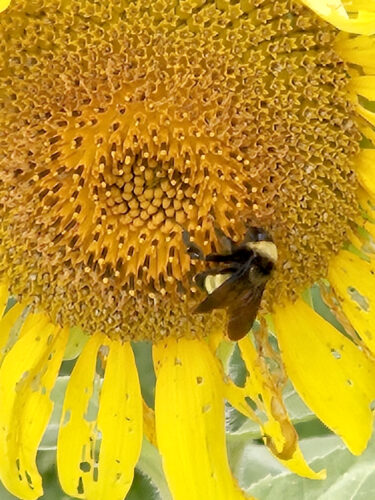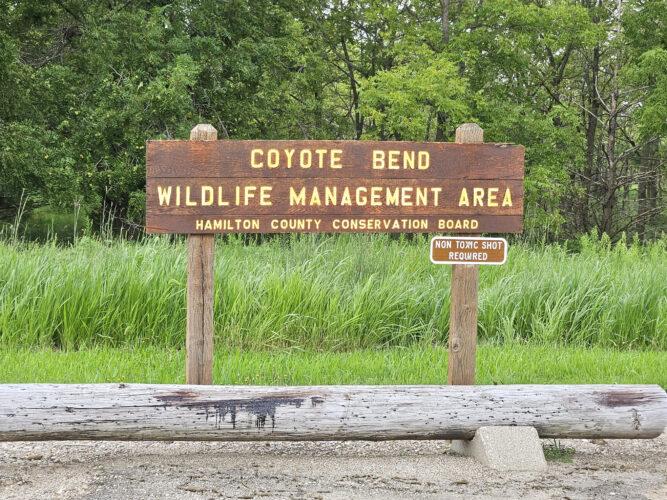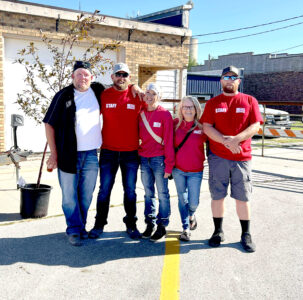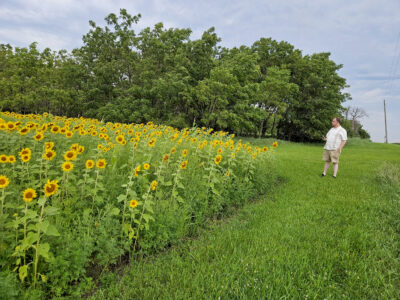More than a field of sunflowers
At Coyote Bend, conservation and cooperation are on the menu
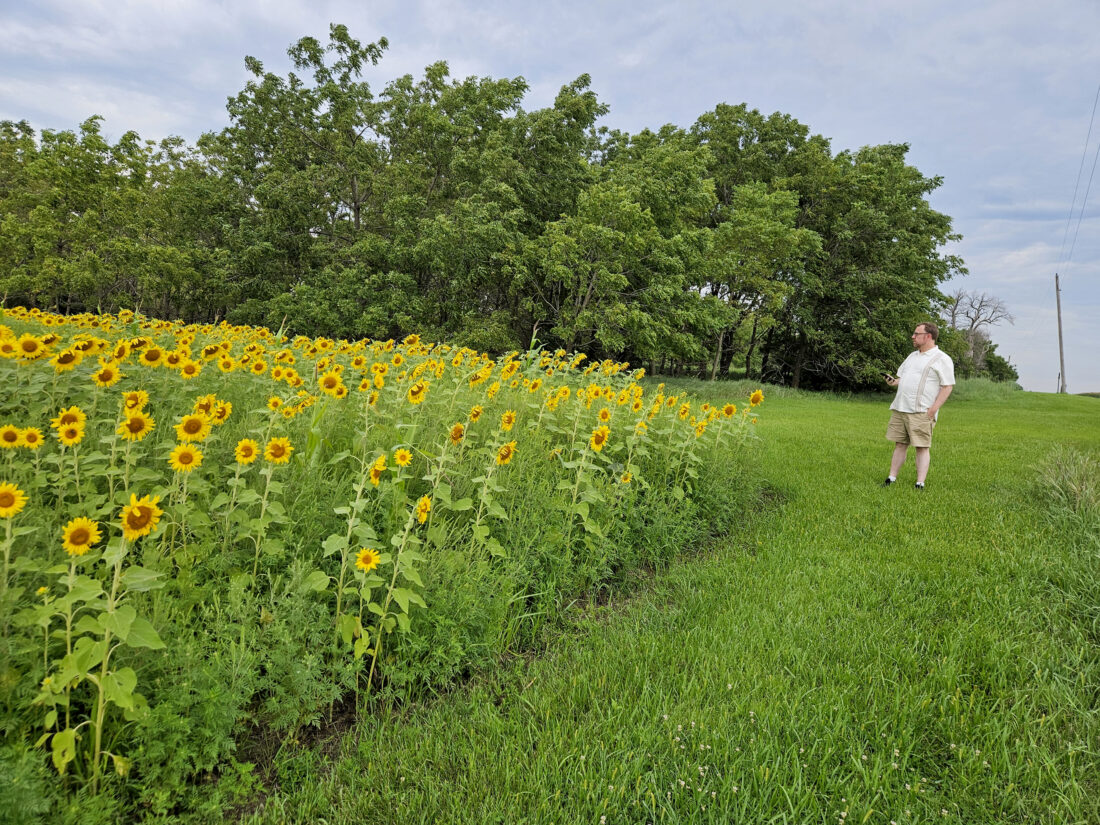
ayson Kerr Dobney, of New York City, New York, visits the sunflower patch recently.
The sunflower field planted near the Coyote Bend Wildlife Management area is more than a cheerful patch of yellow and black. It is a lifeline for the birds, bees and other wildlife that live in the adjacent area.
The field is part of a project coordinated by the Hamilton County Conservation office.
It’s a food plot, a project that has been worked on for more than 10 years. The plants will help feed the wildlife over the winter; it is one of 16 plots of land owned by Hamilton County Conservation.
Scott Grimm is the Natural Resources coordinator for the department and responsible for managing these properties.
“We’ve been putting food plots in over the years at Coyote Bend,” Grimm said. “Last year we did corn. Another year, sorghum. This year is sunflowers.”
The Coyote Bend property consists of 26.56 acres and is open to public hunting. In total, there are 1,400 acres of natural resource areas in Hamilton County. Some can be hunted on, others cannot. The management of these areas rests with Grimm.
Grimm has been handling the wildlife areas since 2014, but has been with Hamilton County Conservation since 2002.
The Coyote Bend Wildlife area was established when the land was donated in 1993 by Farmer’s National Bank. The property has also been planted with rows of pine and walnut trees, providing winter cover for wildlife.
Grimm points out that these plots are not managed without a lot of help. Neighbors in the Coyote Bend area till the ground and help plant the chosen food each year. Carroll Ose and Troy Keane work the land, plant the seeds and Ose mows and keeps the area trimmed. Sam Ose helped plant wildflower seeds just south of the sunflower field, in an area where the ground is not very fertile, working to get native plants re-established. The flowers are sparse, but they are just starting to take hold.
Having neighbors who are willing to volunteer their time and equipment to help manage these resource areas is critical to keeping the properties neat and creating an inviting environment to both two- and four-legged creatures. Large projects, like a prescribed burn, take many hands and the departments within the Conservation offices work together to complete the projects.
The air of cooperation extends beyond the neighborhood, as other groups are committed to the habitat within the county. Fertilizer and seed are provided by other entities.
“I believe United Cooperative donated the sunflowers for this plot,” Grimm said. “I know that they have donated the corn for past years.”
Members of Pheasants Forever also contribute.
“I use a buggy spreader and spread fertilizer on the food plots and they pay for the fertilizer for the plots,” he said. “Pheasants Forever also provided the seed for the sorghum.”
The many hands help create shelter and food for the animals, birds and pollinators that need a food source and shelter to survive the Iowa winters.
Although its purpose is to feed and help the wildlife infrastructure, it’s also a beautiful sea of yellow and black that can be seen from U.S. Highway 20 if you look close during the peak season.
Most recently, the weight of the seeds now keep the sunflower heads bowed, allowing insects and birds to feed.
“The splendor is with youth,” Carroll Ose said, noting that at their peak the sunflowers are a beautiful sight.
“Everything benefits; the songbirds, the bees, the pollinators,” Grimm said. “Any other habitat improvements that we can do will help not only the wildlife, but also benefit the neighborhood.”
